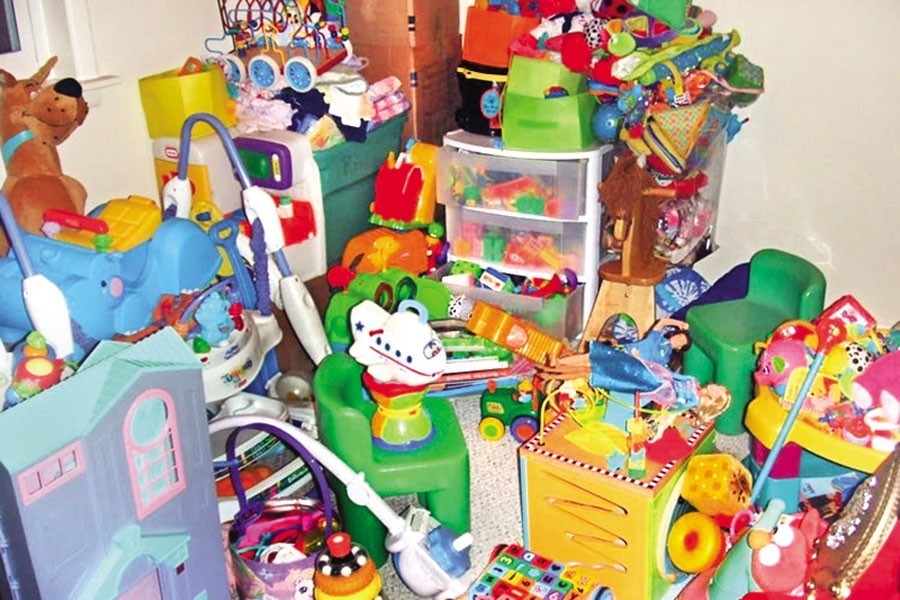There are few children who do not feel delighted on being given toys as gift. Affluent parents buy their kids the latest versions of toys. The children of not-so-rich parents are destined to derive joy from cheaper and moderately functioning toys. Against this backdrop, Bangladesh once showed enormous export prospects for toys made in the country. Compared to the markets of the bygone days, the present toy-business outlets tempt young ones of both middle-class and richer segments in society. Earlier, toys were too simple and 'dull'. Those have now been consigned to children of the marginalised classes. The toys which are favourite with the 21st century tiny tots belonging to the upper and upper-middle classes are invariably automated. Almost all of them are electronically operated. Digital and remote-controlled toys have long filled the racks of the super shops. It's happy news that the country's toys are slowly entering the regional export destinations.
In spite of the indoor happy times children are basking in, the results of some studies on toys make many feel troubled. In-depth research in Bangladesh and abroad has singled out the local toys for containing lead. Lead is a common chemical, used in different structures for enhancing their brightness. According to the findings of the research conducted by US and EU regulatory agencies, the lead-containing toxic toys have many hazardous side-effects. Dominant among them is the damages done to children's central nervous system and brain function. The other health impacts include decline in learning ability, hormone-related complications and cancer. Moreover, the regulatory agencies have termed lead a hazard for both human health and environment.
Basically an industrial product, lead is used to add to the dazzle of toys --- a practice followed in the local toy industries. It calls for foolproof intervention by the relevant state regulatory body. Upon being pressed by environmental experts and child welfare activists, the regulatory body in 2018 set a standard for the use of lead coats and other toxic substances. The efficacy of the measure has yet to show any distinctively positive results. In such a circumstance, the demand of the country's environmental experts for a complete ban on the use of lead in toys seems quite rational. Meanwhile, the big names in the international paint companies claim that they have started shifting from lead paint. Unless the local paint-making entities follow suit, they may have to brace for worse times in the public health-conscious segments, thus observes the Environment and Social Development Organisation (ESDO). After a detailed study, it has found that most of the local toys contain high levels of toxic substances, including lead, mercury, cadmium, bromine and chromium.
What is most alarming, levels of toxic elements in 97 per cent toys tested have been found significantly above the EU and US-recommended ceiling of lead and other hazardous chemicals, says a FE report quoting the ESDO. Apart from the overseas regulatory bodies, experts at Bangladesh's BUET, ICDDR,B and BSTI appear to be unanimous in their claim of the dreadful lead impact on humans. In the case of small children, they are mostly affected by inhaling their toys. Amid the unbridled use of lead in toys, the government is said to be attaching importance to fix a permissible level for the use of lead in toys and other materials. A positive outcome is expected in three months. The information is optimistic. No parents want to see noxious whiffs of dread emitting from toys, a source of pure joy.


